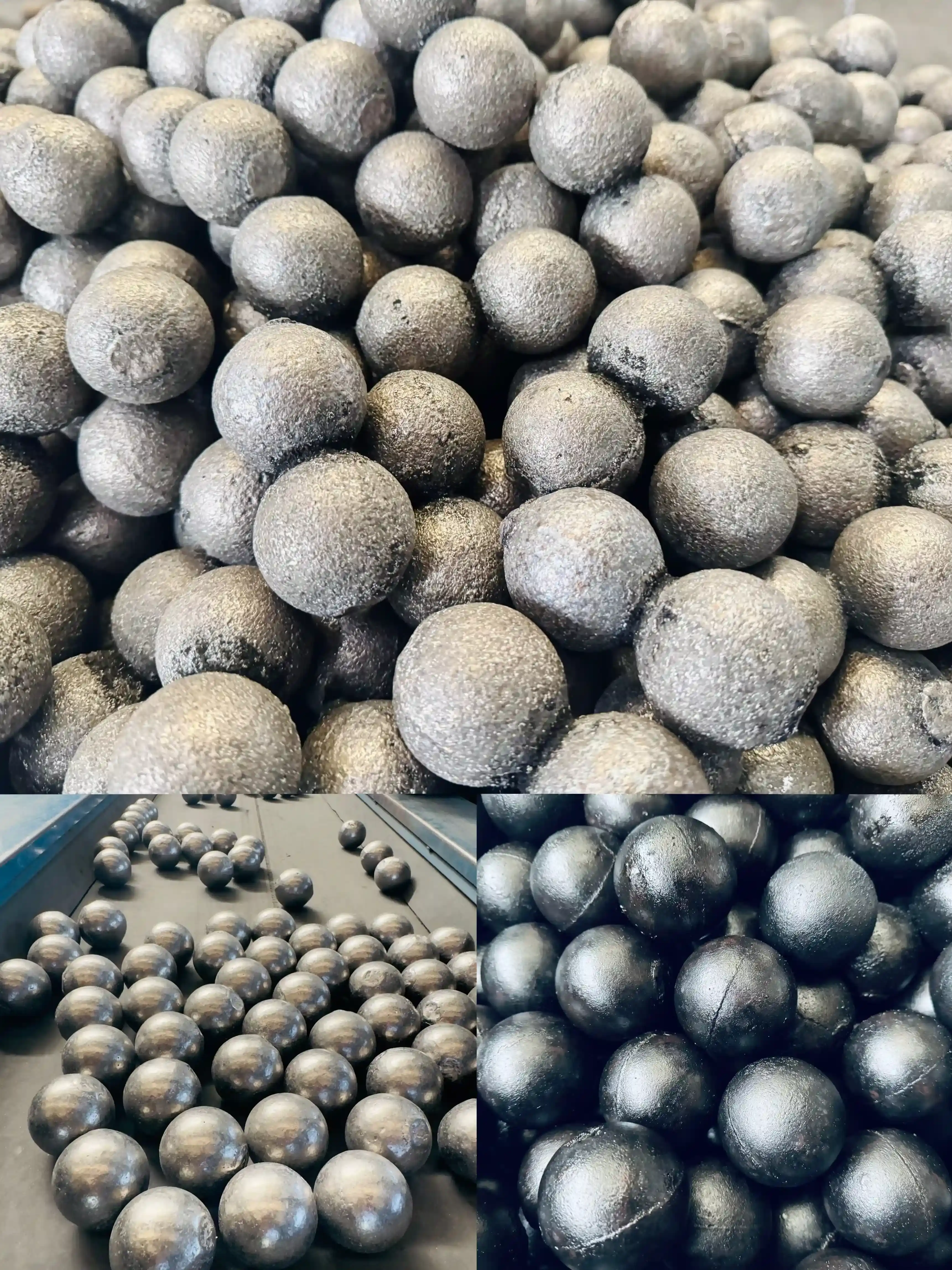The Core Elements of High Chrome Steel Grinding Media
High chrome steel grinding media balls are primarily composed of iron, carbon, and chromium. The specific percentages of these elements can vary depending on the manufacturer and the intended application. However, the typical composition ranges are as follows:
- Iron (Fe): 80-85%
- Chromium (Cr): 10-18%
- Carbon (C): 1.8-3.0%
The high chromium content is what sets these grinding media apart from other types of steel balls. Chromium contributes to the formation of hard carbides, which significantly enhance the wear resistance and hardness of the material. This unique composition allows high chrome steel grinding media to maintain their shape and effectiveness over extended periods, even in harsh grinding environments.
In addition to these primary elements, high chrome steel grinding media balls may also contain small amounts of other alloying elements to further improve their properties. These can include:
- Manganese (Mn): 0.5-1.2%
- Silicon (Si): 0.3-0.8%
- Molybdenum (Mo): 0.1-0.5%
- Nickel (Ni): 0.1-0.5%
These additional elements contribute to the overall strength, toughness, and corrosion resistance of the grinding media, making them suitable for a wide range of applications across various industries.
The Manufacturing Process and Its Impact on Composition
The composition of high chrome steel grinding media balls is not solely determined by the raw materials used but also by the manufacturing process. The most common method for producing these grinding media is through casting, which involves melting the raw materials and pouring them into molds to create the desired shape and size.
During the casting process, several factors can influence the final composition and properties of the grinding media:
- Melting temperature: The temperature at which the raw materials are melted can affect the distribution of alloying elements and the formation of carbides.
- Cooling rate: The speed at which the molten metal cools can impact the microstructure of the steel, influencing its hardness and wear resistance.
- Heat treatment: Post-casting heat treatments, such as quenching and tempering, can further modify the composition and properties of the grinding media.
Advanced manufacturing techniques, such as continuous casting and controlled cooling, allow for more precise control over the composition and microstructure of high chrome steel grinding media balls. This level of control enables manufacturers to produce grinding media with consistent quality and tailored properties for specific applications.
Some manufacturers employ innovative production methods to enhance the performance of their grinding media. For example, the addition of certain rare earth elements or the use of proprietary heat treatment processes can result in grinding media with superior wear resistance and improved energy efficiency during the grinding process.
The Role of Composition in Performance and Applications
The composition of high chrome steel grinding media balls directly influences their performance characteristics and suitability for various applications. Understanding these relationships can help industry professionals select the most appropriate grinding media for their specific needs.
Key performance attributes affected by composition include:
- Wear resistance: Higher chromium content generally leads to improved wear resistance, extending the lifespan of the grinding media.
- Hardness: The carbon content and heat treatment process contribute to the overall hardness of the grinding media, affecting their ability to crush and grind materials effectively.
- Toughness: Alloying elements like manganese and nickel can enhance the toughness of the grinding media, reducing the risk of fracture during operation.
- Corrosion resistance: The presence of chromium provides excellent corrosion resistance, making these grinding media suitable for use in various chemical environments.
Different industries may require grinding media with specific compositional characteristics to meet their unique challenges. For example:
- Cement industry: High chrome steel grinding media with a chromium content of 10-14% are often preferred for their balance of wear resistance and impact strength.
- Mining industry: Grinding media with higher chromium content (15-18%) may be used in mineral processing applications where extreme wear resistance is required.
- Power generation: Coal grinding operations may utilize grinding media with optimized compositions to withstand the abrasive nature of coal particles.
As technology advances, researchers and manufacturers continue to explore new compositions and manufacturing techniques to further improve the performance of high chrome steel grinding media balls. These innovations aim to address industry-specific challenges, such as reducing energy consumption in grinding processes or extending the service life of grinding media in highly abrasive environments.
In conclusion, the composition of high chrome steel grinding media balls is a critical factor in their performance and application across various industries. By understanding the role of each element and how manufacturing processes influence the final product, professionals can make informed decisions when selecting grinding media for their specific needs. As the demand for more efficient and durable grinding solutions continues to grow, ongoing research and development in this field will likely lead to further advancements in high chrome steel grinding media composition and manufacturing techniques.
For more information about our high-quality high chrome steel grinding media balls and other wear-resistant products, please don't hesitate to contact us at sales@da-yang.com and sunny@da-yang.com. Our team of experts is ready to assist you in finding the perfect grinding solution for your industrial needs.









